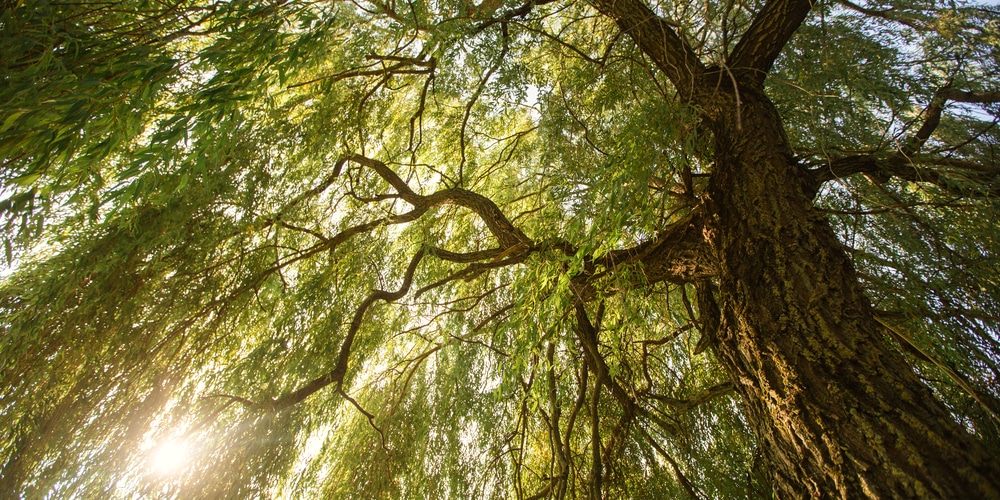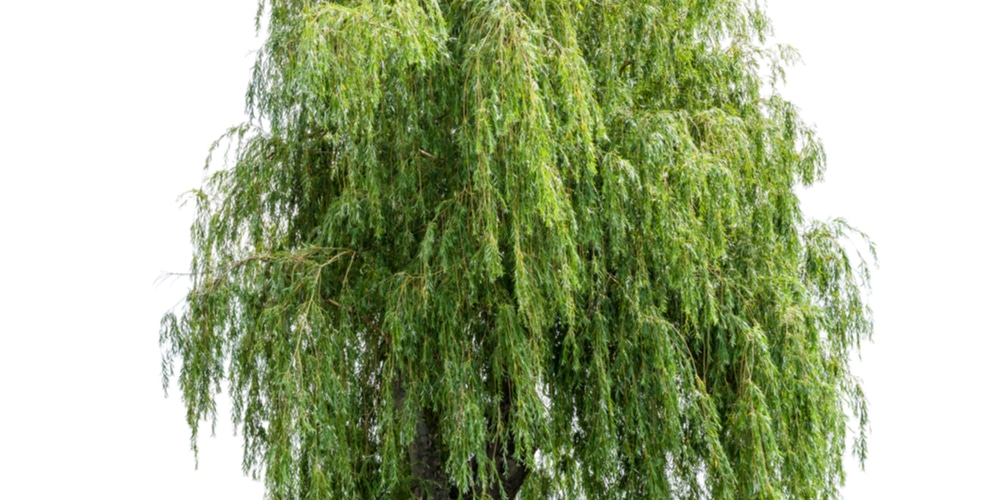The question ‘How long do willow trees live?’ might come to mind before you decide to plant one in your yard. Generally, willow trees have an average lifespan of around 30 to 40 years.
Let’s dig into willow trees and why they have a relatively shorter life than other tree species.
How Long Can a Willow Live?
Willow trees belong to the Salix species and are very fast growers. They’re native to China, can reach up to 50 feet tall, and have the same spread. You’ll usually find willows hanging around ponds and near bodies of fresh water.
Willows tend to grow vigorously while they’re young, then taper off and start a noticeable decline after 20 years. However, there are ways to prolong your willow tree’s life and have it reach up to 40 or even 50 years.
First, you will have to plant the tree in its preferred USDA growing zone. Then, you’ll have to meet all its growing requirements, including light, watering, pruning, and fertilization.
How to Grow Your Plant to be a Long-Lived Willow Tree
It’s certainly possible to have a willow tree that lives 30 years or more. The reason why willows tend to be short-lived is that they want to be in a constantly moist and cool environment, which is something that tree diseases and pests also like.
Willows are favorite targets of willow blight, black canker, leaf rust, tar spot, Japanese beetle, and others. Your tree might be affected by some of these tiny and microscopic pests and you wouldn’t even know until it’s too late.
To ward these pests off you’ll need to make your willow as healthy as possible. This can be done with the following:
- Yearly pruning
- Feed it with the right fertilizer
- Meeting water and light requirements
Regular Pruning
It’s recommended that you prune your willow tree while young and have it assume a single leader (trunk). You can train it to have wide branch crotches to minimize breakage and as a buffer against strong winds.
Pruning a willow should be done in February or March to not disturb its flowering period. You can snip back all the branches to the nearest leaf bud to make it bushier. During this time you can remove dead leaves and branches along the way.
With regular pruning, you reduce the chances of a pest or disease afflicting your plant, as well as giving it a neat aesthetic appearance.
Feed a Balanced Fertilizer
Willow trees should be fertilized if you want them to live a long and productive life in your landscape. You can skip this part if you add organic material constantly or have an adjacent lawn that gets fed.
A balanced 20-20-20 fertilizer works best for willow trees. Always follow the instructions as printed on the label for the best results. Good organic fertilizer for willows includes steer manure as it has a similar chemical makeup of equal parts nitrogen, phosphorus, and potassium.
Apply the fertilizer around the drip line and not directly adjacent to the tree’s trunk area. You can feed your willow once every growing season while it’s still young and less as it matures.
Meet Water and Light Requirements
Willow Trees will grow and flourish in full sun with at least four hours of unfiltered light. It’s worth noting that these trees collect and store water at an amazing rate and that they have very aggressive roots.
Willows can withstand long periods of drought as long as they’re getting water and nutrients nearby.
Related Article: How Short can You Cut a Weeping Willow Tree?

